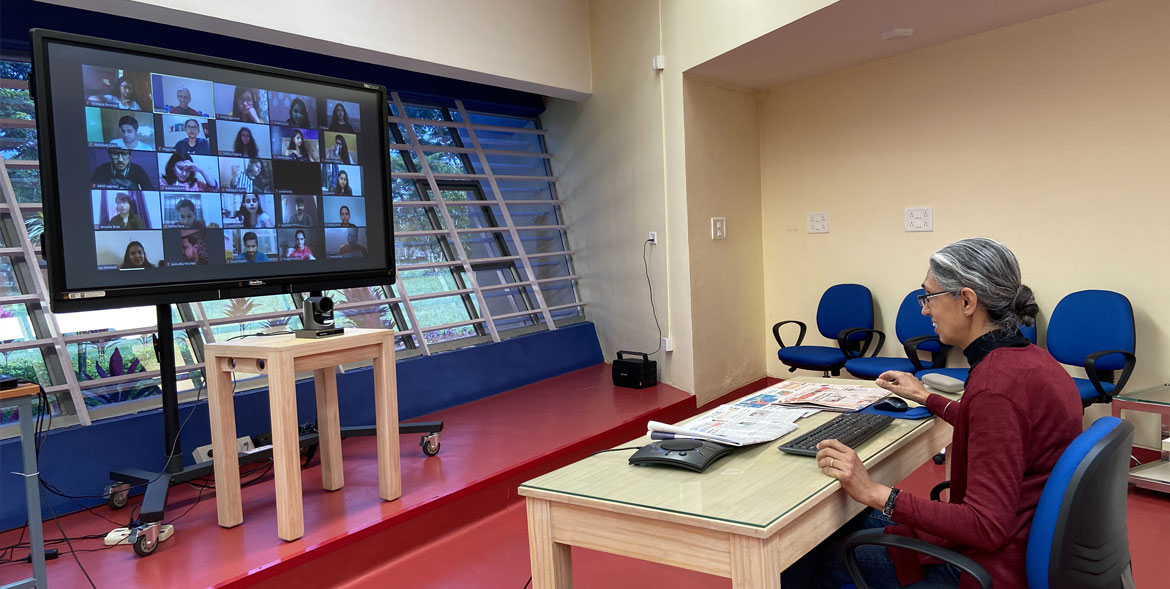Teaching journalism during a pandemic
COVID-19 upended social structures and wreaked havoc on the country’s education system. Functioning of schools and colleges is disrupted, forcing major changes to the delivery of class materials. Fortunately, we at the Indian Institute of Journalism & New Media have been prepared to meet this strange new-world head on.
As our method of teaching evolves, the subjects that are taught evolve with it. At IIJNM, we understood the importance of an influx of learning-focussed applications and software making it possible to have online classes that mimic physical/on-site classroom environments. The fact that such technology was already in use at IIJNM well before the pandemic only strengthened our capacity to combat the challenges that the pandemic posed.
Since very few schools and colleges in India deal with journalism as a practice-heavy course, those that do, like IIJNM have an upper hand when it comes to rethinking curriculum for the pandemic. In the twenty years since its founding, IIJNM has focussed on a number of creative and technological ways to bring the world into its classrooms and provide a holistic outlook of the field. A flipped classroom approach that has been a common practice at this journalism school has already laid the foundation for a path-breaking online-learning effort.
By using the array of tools available, not only can skills be transferred efficiently, but also make the experience fun. We began the year by involving students in the process by having them undertake guides and real-time surveys about a topic in class thus giving our students a truly immersive online learning experience. Our online classes also ensured their continued engagement by having them contribute to the in-house publications – Softcopy, Observer and Citycast. During this time, our students exceeded our expectations by successfully running a live-zoom bulletin as part of their course.
Using an open-source learning management system like Moodle, IIJNM allows its professors to provide real-time personal feedback to the students in addition to grades and assignments. These platforms provide the option of instituting forums which the professors and students use to talk about topics discussed in class once the allotted hour is done. This is designed to ensure that the students have a semi-formal way to discuss doubts and find solutions like they would in a real classroom.
Controlled interactive sessions, real-time online quizzes and one-on-one online counseling are some of the ways we succeeded in building and implementing a coherent online curriculum to suit the demands of the pandemic and beyond.
With the students reporting to campus in the second semester of their course, we turned our attention to helping them acquire practical industry-level skills by focusing on targeted workshops on applications and software in their streams of choice. The students went through rigorous hands-on training where they acquired shooting, editing, designing skills and are ready to enter the industry. Our students also delved in-depth into their streams as they discovered the intricacies of fields such as Multimedia, Magazine Writing, Newspaper, TV News and Documentary. Special lectures and alumni discussion sessions were arranged, both online and offline, to provide wider exposure to industry practices and expectations.
2020 has truly been a remarkable year for IIJNM; it has only strengthened our resolve to provide the best journalism training to our students.

